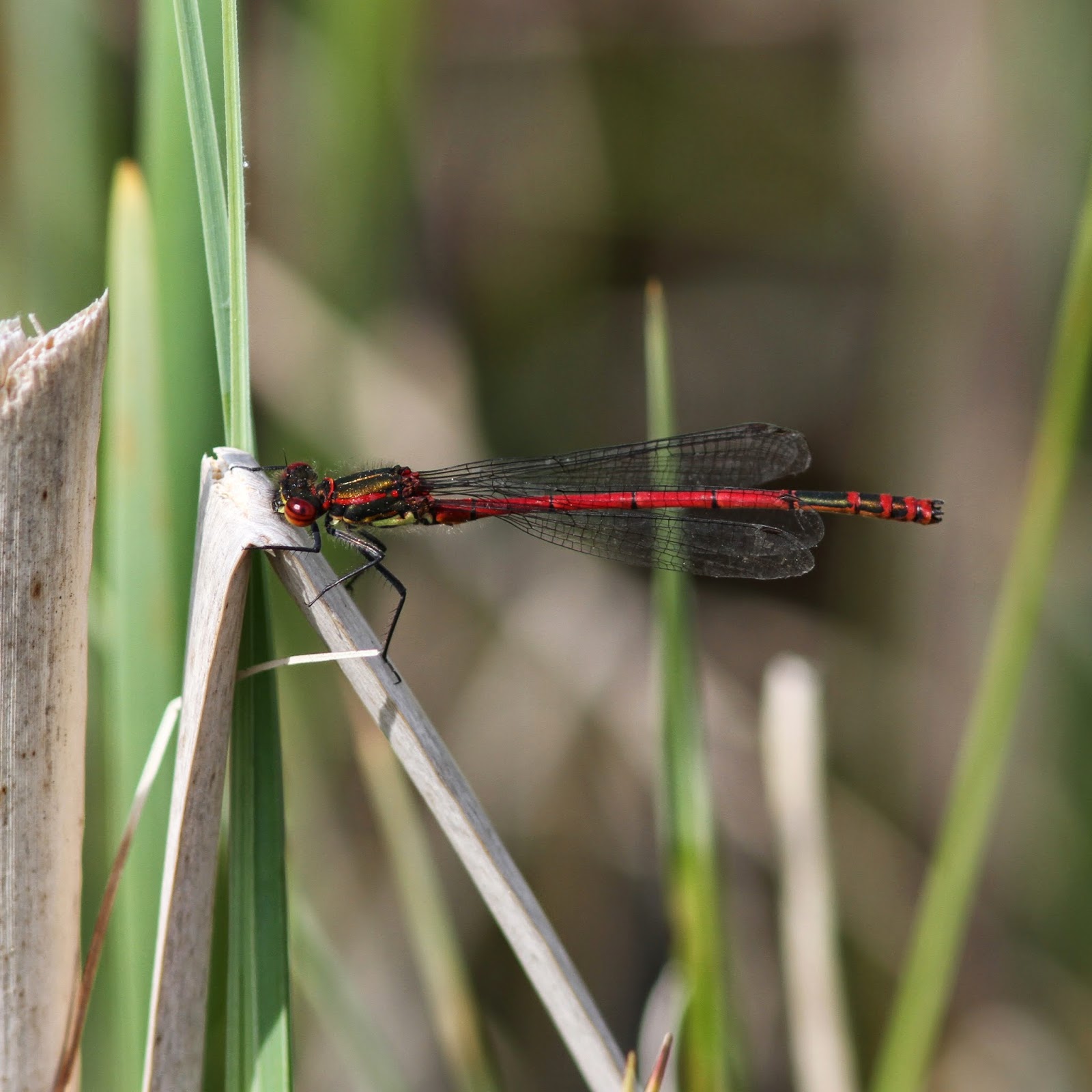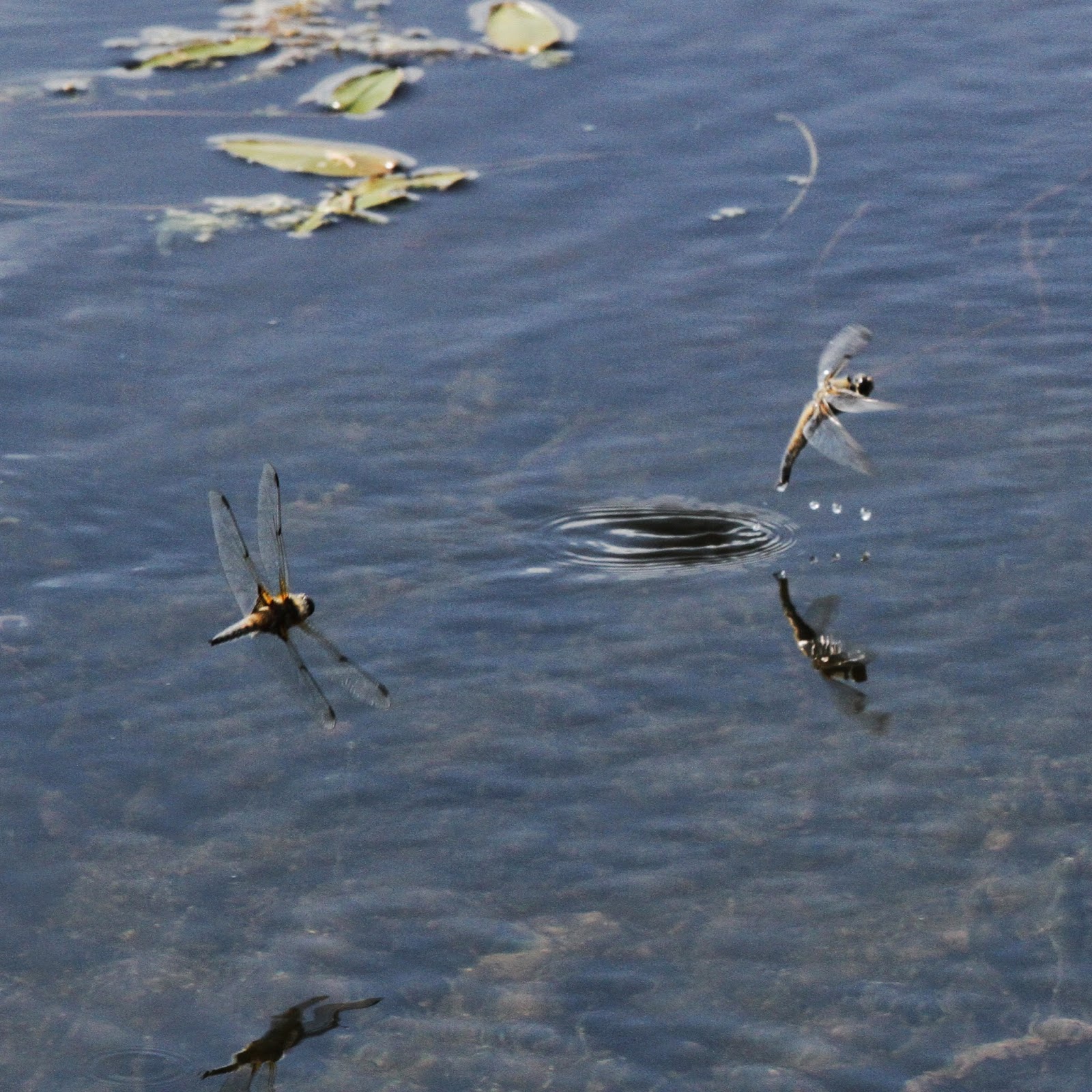The blue-tailed damselfly (Ischnura elegans) is one of the commonest species. This is the male with two-toned diamond-shaped spots on his wings and a blue tail.
The female comes in five colour forms. This is the immature violacea.
She matures to either the male-type colouration (typica)
or an olive green / brown (infuscans).
The other immature female form is rufescens
which matures to the rufescens-obseleta form.
Most of the damselflies I saw today were females, which was good news for the males. This is a male in tandem with a typica female.
This male is in a wheel with a rufescens-obseleta female
and this one with an infuscans female.
All these photographs were taken within an hour in a 20m stretch of one bank of one small pond. Amazing.























































